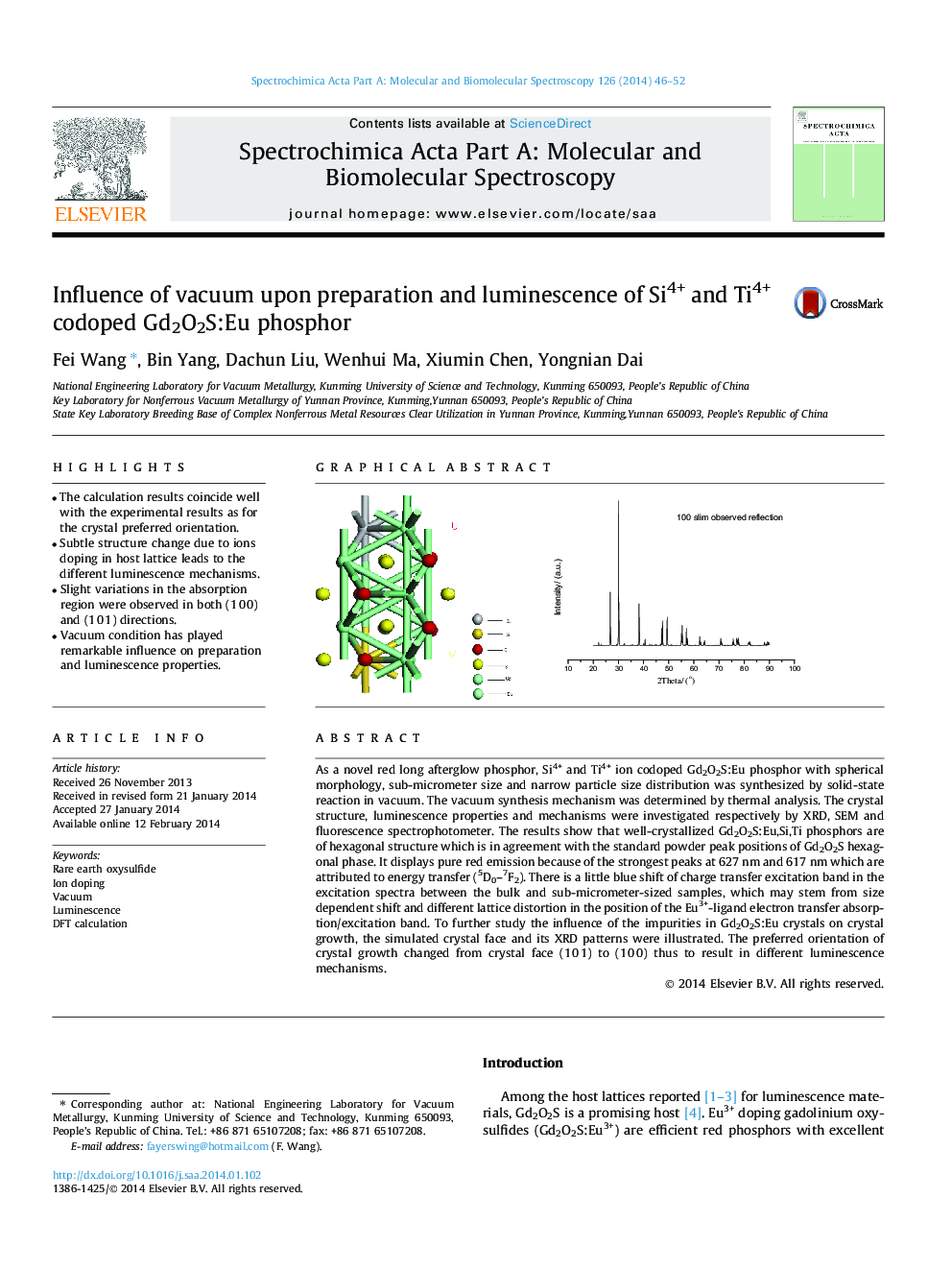| Article ID | Journal | Published Year | Pages | File Type |
|---|---|---|---|---|
| 1229927 | Spectrochimica Acta Part A: Molecular and Biomolecular Spectroscopy | 2014 | 7 Pages |
•The calculation results coincide well with the experimental results as for the crystal preferred orientation.•Subtle structure change due to ions doping in host lattice leads to the different luminescence mechanisms.•Slight variations in the absorption region were observed in both (1 0 0) and (1 0 1) directions.•Vacuum condition has played remarkable influence on preparation and luminescence properties.
As a novel red long afterglow phosphor, Si4+ and Ti4+ ion codoped Gd2O2S:Eu phosphor with spherical morphology, sub-micrometer size and narrow particle size distribution was synthesized by solid-state reaction in vacuum. The vacuum synthesis mechanism was determined by thermal analysis. The crystal structure, luminescence properties and mechanisms were investigated respectively by XRD, SEM and fluorescence spectrophotometer. The results show that well-crystallized Gd2O2S:Eu,Si,Ti phosphors are of hexagonal structure which is in agreement with the standard powder peak positions of Gd2O2S hexagonal phase. It displays pure red emission because of the strongest peaks at 627 nm and 617 nm which are attributed to energy transfer (5D0–7F2). There is a little blue shift of charge transfer excitation band in the excitation spectra between the bulk and sub-micrometer-sized samples, which may stem from size dependent shift and different lattice distortion in the position of the Eu3+-ligand electron transfer absorption/excitation band. To further study the influence of the impurities in Gd2O2S:Eu crystals on crystal growth, the simulated crystal face and its XRD patterns were illustrated. The preferred orientation of crystal growth changed from crystal face (1 0 1) to (1 0 0) thus to result in different luminescence mechanisms.
Graphical abstractFigure optionsDownload full-size imageDownload as PowerPoint slide
